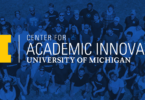Deux articles dans le Chronicle of Higher Education de cette semaine jettent des cailloux dans la même mare, soit la trop faible attention que certains enseignants consacrent aux étudiants. Dans “Teach or Perish”, Jacques Berlinerblau évoque ce qu’il qualifie de “crise du professorat” (postes qui ferment, relève désillusionnée, multiplication des chargés de cours, etc) et critique sévèrement les décharges que plusieurs professeurs obtiennent pour faire d’abord avancer leur recherche:
“Somewhere along the way, we spiritually and emotionally disengaged from teaching and mentoring students. The decision—which certainly hasn’t ingratiated us to the job-seeking generation—has resulted in one whopper of a contradiction. While teaching undergraduates is, normally, a large part of a professor’s job, success in our field is correlated with a professor’s ability to avoid teaching undergraduates.” (Berlinerblau, 2015)
Que l’on soit d’accord ou non avec son analyse, il a le mérite de poser d’excellentes questions:
“Was it sustainable to configure a field so that the quality and (mostly) quantity of peer-reviewed research became the unrivaled metric by which status and advancement were attained? Ought we to have investigated whether there exists a point of diminishing returns—a line beyond which too much publication, too much specialization, becomes intellectually counterproductive? Why did we fail to examine the long-term impact on both students and scholars of having the latter so singularly focused on publishing? Why did we not promote the ideal of professors equally skilled in both research and instruction? Why did we invest so little thought in puzzling through how teaching excellence could result in tenure? Was it wise never to train graduate students how to write clearly, speak publicly, and teach effectively?” (Berlinerblau, 2015)
Il s’interroge sur la prépondérance des formateurs universitaires à accumuler de la connaissance dans un monde où c’est la circulation de cette connaissance qui est de plus en plus valorisée:
“…We’re moving from an era in which we prized accumulating knowledge to one in which we equally prize its transmission. Professors are failing to deliver, as it were. This leaves us fatally exposed to challenges that are unnerving and in some cases unprecedented.” (Berlinerblau, 2015)
Plus loin, il affirme: “Society will always need skilled transmitters of knowledge. But another peer-reviewed article on the “circulation of Enlightenment triumphalism” in Thomas Hardy’s Tess of the D’Urbervilles, not so much.”
La solution: revoir les priorités et se rapprocher des étudiants. Berlinerblau se demande même si les innovations technologiques en appui à l’enseignement et les pédagogies alternatives des dernières années ne sont pas des tentatives malhabiles pour forcer ce rapprochement.
“To effectively neutralize increasingly common assaults [de conservateurs qui ne voient les universités qu’en termes de résultats d’emplois], we need to demonstrate that professors are deeply invested in, and committed to, the minds of undergraduates. Not just a few professors. All professors… […] I sometimes wonder, though, if the present enthusiasm for alternative pedagogies, like “flipped classrooms,” is a 21st-century virtue born of a late-20th-century vice. The art of college-classroom teaching had fallen into complete disrepair. Simply put, having professors do what they’d been doing for the past few centuries was no longer viable.” (Berlinerblau, 2015)
Puis, dans “Waiting for Us to Notice Them”, James M. Lang se demande s’il n’est pas temps d’accorder davantage d’attention aux étudiants lors de la transmission des contenus. Il prêche pour de véritables contacts humains et affirme que les étudiants mentionnent que ce sont les relations interpersonnelles qu’ils créent qui s’inscrivent comme leurs souvenirs les plus précieux de leurs années d’université:
“Being more present to my students might mean letting go of my grip on my classroom schedule. If we don’t get through every scrap of the material today, we’ll probably get to it in the next class session. Being more present to the students probably means pausing more frequently to check on their learning, in whatever form that might take. Undoubtedly it means more than just stopping every now and then to ask, “Any questions?” (Lang, 2015)
Lang se demande (sans y répondre) à quel point, cette “pédagogie de la présence” peut s’appliquer en formation à distance:
“Even more troublesome is the challenge of making ourselves present as instructors in online environments. I don’t have any easy solutions. Heck, I’m not convinced there are easy answers for how to be more present even in face-to-face classrooms. Faculty members can be just as absent in a flipped classroom as they can in a lecture, although it seems to me that classroom structures that require frequent student-faculty interaction provide more opportunities for a pedagogy of presence than traditional teaching methods like lectures.”
Qu’en pensez-vous? Cette “présence” manque-t-elle? Si oui, comment l’augmenter dans le contexte budgétaire actuel?
Sources:
Berlinerblau, Jacques, “Teach or Perish », The Chronicle of Higher Education, 19 janvier 2015
Lang, James M., « Waiting for Us to Notice Them », The Chronicle of Higher Education, 19 janvier 2015






